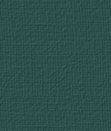
|
Thiruttondar Puraanam, more popularly known as
'Peria Puraanam' (the Magnificent Narration), is the twelfth and the last Thirumurai of
the Saivite canonical scriptures in Tamil held in profound veneration as a text
of Jnaana and Bhakti and Sekkinar did the prose version .
The theme of this text is a
rapturous account of the lives of the 63 Saivite Saints, hailed as Nayanmars or
Nayanars, who graced the Tamil kingdom more than 1300 years ago. These holy
servitors of the Lord do not belong, exclusively, to any one single community:
they are traced to varied sections, the high, the low, the rich, the poor, the
high caste, the low and the outcast(e)! What bound them all together was their
'magnificent obsession', their undying, unalloyed devotion to Lord Siva and
their uncompromising commitment to the propagation of Saivism. The hagiography
of this unique order of Saivite Saints is a grandiloquent, and often graphic,
illustration of the search for, and the resultant emancipation of the soul
towards the Supreme Divine Consciousness.
The author of 'Peria
Puraanam' is 'Sekkinar' who, in turn, and in his time, was inspired by the
narration of the lives of these great souls in Sundaramoorthi Swamigal's 'Thirutthondatthogai'
('the collective account of the Lord's devout servitors') of the eighth century
and 'Thirutthondar Thiruvandaadi' of Nambiandar Nambi of the tenth century. It
is chronicled that Sekkinar himself belonged to the eleventh century A.D. He
was the Chief Minister to the Anabhaya Kulothunga Chozha of the same period.
Sekkizhaar's 'Peria Puraanam' is deemed to be the most important work in this
context and hence, is revered as one of the 'Thirumurais', next only to Thevaram
and Thiruvachakam in the sacred order of Tamil Saivite canonical texts.
Of the 63 saints, only one
was a woman - Karaikkal Ammaiyaar, who was most affectionately and endearingly
called by the Lord Siva Himself, 'O, My Mother, welcome to My abode in Kailas',
when she reached the holy Mount walking on her head, for she would not defile
that most sacred abode with her feet!' 'Ammaiye, Varugha, Nalvaravaaguha' -
'Welcome, My dear Mother, most welcome!' She reduced herself, earlier, to a
skeletal form (shedding all her flesh and sinews) - 'a female wraith of
shrivelled breasts, swollen veins, protruding eye-balls, sunken stomach, fiery
red hair, white teeth, arched insteps, long shanks...' (quote: G. Vanmikanathan').
There is actually not much
that I have on Sekkinaar Peruman. But what was told is
he was born in Kunrathoor near Madras to Velliyangiri Mudaliar and mother
Alaga ambigai.
Under the instruction of
King Anapaya Solan , Sekkinar went to Thillai Pon Ambalam to write
Peria Puranam.To begin his book he prayed to the Supreme power to guide
him with the introductory line.Immediately there was a sound
with the word ullagellam
. Using this, Sekkinaar started off his Peria Puranam .
|
|
| | | |
| | |


